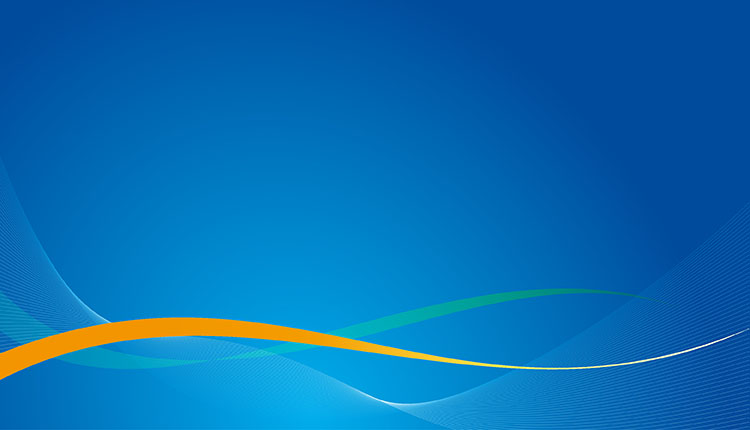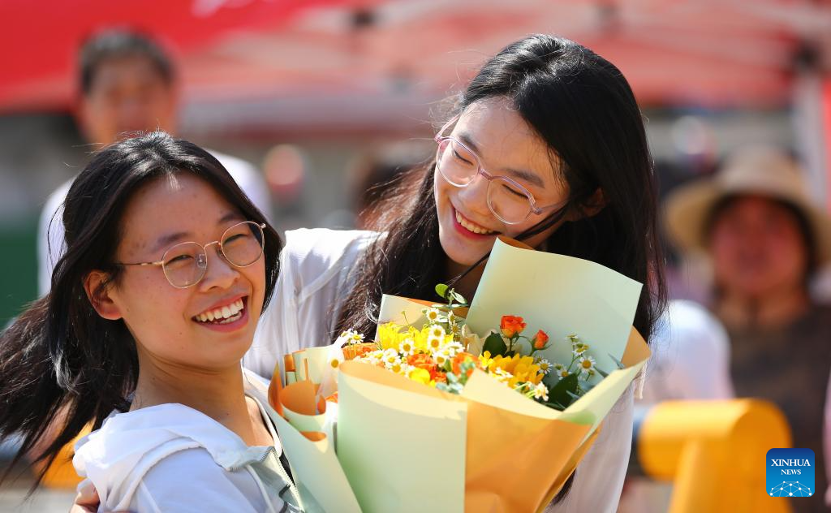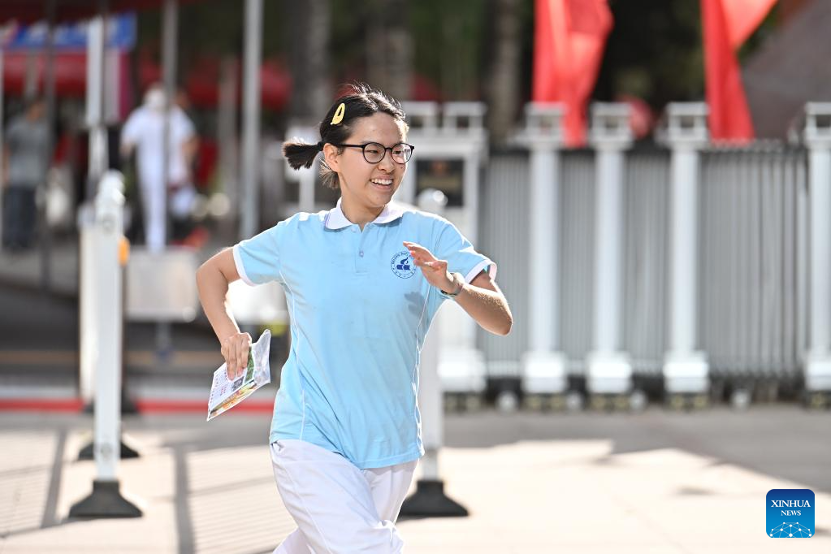




- BRNN
- BRI News
- BRNN News
- Database
Official Documents Polices and Regulations
Inter-government Documents International Cooperation BRI Countries
Business Guide Economic Data BRI Data
Trade
Investment Projects Latest projects
Cases - Content Pool

An examinee (L) is presented with flowers by her friend at an exam site in Tengzhou City, east China's Shandong Province, June 10, 2023. (Photo by Li Zhijun/Xinhua)
In the next few days, the entire nation will be filled with nervous anticipation as China's most significant exam, the gaokao, approaches. This exam offers a fair opportunity for people from all backgrounds to go on a life-altering journey.
China's annual college entrance exam (gaokao) is extremely important to the Chinese. The exam papers are classified as "top secret" by the Chinese government, the highest level of state secrecy under China's Law on State Secrets. In 2025, over 13.35 million high school students in China will take the exam.
China may be changing at mind-blowing speed, but worship of the gaokao remains as immutable as when it was first initiated in 1952. As an ancient Chinese saying goes, scholarship pursuing surmounts all other occupations, and this traditional belief still holds true in modern times.
Gaokao is China's annual undergraduate admission exam. It began in 1952 and was reinstituted in 1977 and continues to this day.

An examinee runs out of an exam site in Beijing, capital of China, June 10, 2023. (Xinhua/Li Xin)
Gaokao is incredibly competitive. The test result will decide what universities an examinee can attend, and consequently, affect their future job prospects.
The examination is the major criterion for entrance into tertiary education. Students who hope to enter university will spend most of their time studying for the exam.
The annual exam is held from June 7 to 8, though it may be extended by one or two days in certain regions. The exam was previously held in July but has been moved to June due to the negative impact of hot weather on students from southern China.
Most Chinese provinces use a unified exam paper, while other regions, such as Beijing and Shanghai, use their own.
Gaokao's test subjects have changed throughout time. The three compulsory subjects are Chinese, mathematics, and a foreign language (any of the following: English, French, Japanese, Russian, German, or Spanish).
Before students were subsequently divided into two tracks, the Arts or Science. Students who pick the Arts track are tested in history, political science, and geography, whereas those who take the Science track are evaluated in physics, chemistry, and biology.
Most regions in China are currently testing a new gaokao system to assist students in acquiring more comprehensive academic performance. The system is known as "3+1+2".
"3" refers to the mandatory Chinese, mathematics, and foreign language subjects. "1" refers to a selection between Physics and History, while "2" refers to two topics from chemistry, biology, political science, or geography that candidates select based on their interests and specialities.
Only a few examinees can go to university without taking the gaokao if they demonstrate outstanding academic competence.
Candidates from China's minority ethnic groups benefit from the exam's favorable policies. For instance, their literary test is made up of a Chinese literature test and an optional subject such as Tibetan, Mongolian, Uygur, Korean literature, and etc.
Candidates from minor ethnic groups in certain regions may be given extra points on their gaokao to nurture talent from ethnic minorities and ensure educational equity.
Gaokao provides Chinese citizens an opportunity for fair competition. Assuming they are gifted enough, they can attend top colleges regardless of their socioeconomic status, and the government will help cover the costs to make it accessible.
However, in recent years the Chinese government has already begun to implement reforms to the gaokao and the enrollment system, aiming to increase access to higher education for students from rural areas and create more vocational schools as alternatives to traditional universities.

Tel:86-10-65363107, 86-10-65368220, 86-10-65363106